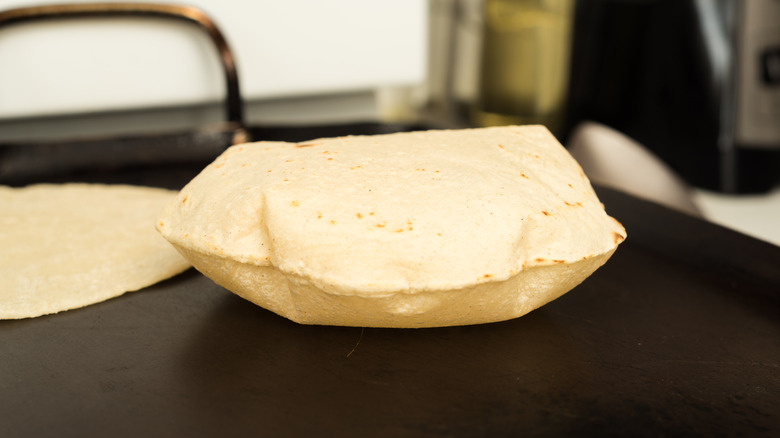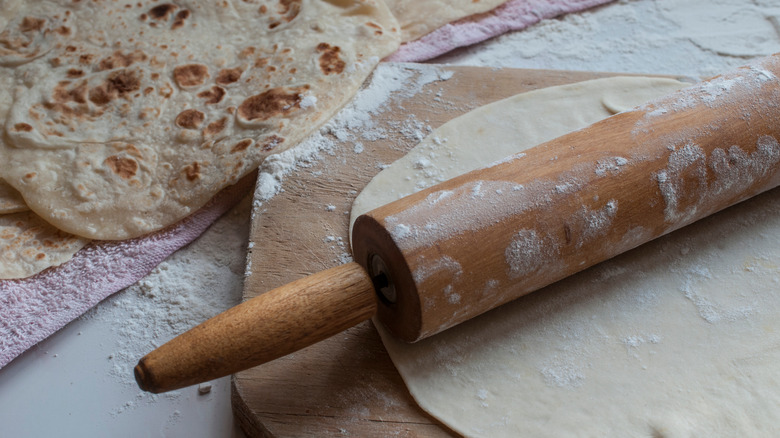The Best Fat To Use In Homemade Tortillas
Many of us prefer flour tortillas to corn tortillas. It's ok to admit it. Yes, we know many people consider corn more authentically Mexican, but it's not true. Corn tortillas may be more prevalent throughout Mexico, but flour tortillas originated in the northern states, Sonora in particular. They are an integral part of the regions' cuisines (per The Washington Post).
Perhaps flour tortillas are preferred because we're more accustomed to them, but it could be the fat. Corn tortillas don't have any fat in them, and traditionally they are made on a comal so hot there's no need to use oil (per Cocina Alcazar). Since we know that fat is key to tastiness, it stands to reason we prefer the tortilla with a bit of fat on the ingredients list (per Purdue University). Tortillas are inexpensive and widely available, so for the most part, we buy them premade. But, they are easy, uncomplicated bread to make at home. A fun project to include kids in, and you'll feel delightedly accomplished when your tortilla billows into a pillow of toasty goodness before your eyes.
Which fat is best for making tortillas?
It's our inclination to choose the healthiest oil we know for most recipes, but don't pour your olive oil too fast. Liquid fat is not what you want for making tortilla dough. Danny Mena tells Epicurious that to make a proper flour tortilla; you need to use a fat that stays solid at room temperature. Unlike lard, butter and oils contain water. Water will alter the ratio of fat to flour, which can change the texture of the dough. Though shortening is also solid, if you are health conscious, making your quesadillas with hydrogenated oils, and probably palm oil, is a no-go.
Lard is the traditional choice for making flour tortillas, and it is a healthier choice than you might think. Global News gives us the rundown on butter versus lard nutrition. It turns out lard has less of the bad and more of the good stuff: 5 grams of saturated fat, 5.7 grams of monounsaturated fat, and .12 grams of omega-3 fatty acids. Butter comes in second, with 7.5 grams of saturated fat, 3 grams of monounsaturated fat, and .05 grams of omega-3 fatty acid. But, though lard has more monounsaturated fat and omega-3 fatty acids than butter, it's still not as healthful for everyday use as olive oil.
However, since you are probably not planning to make tortillas every day, lard is likely the best choice for this task.

